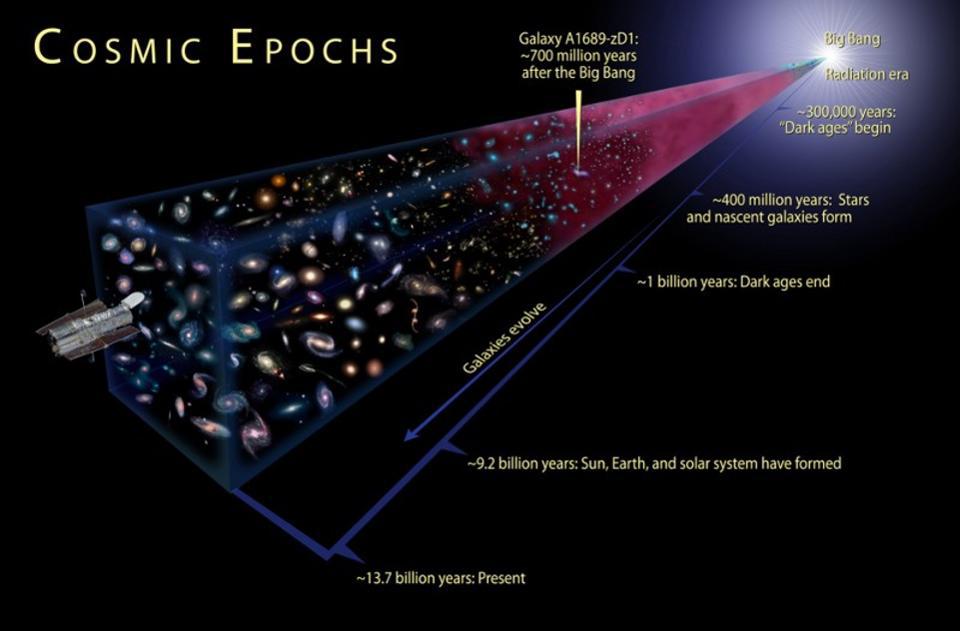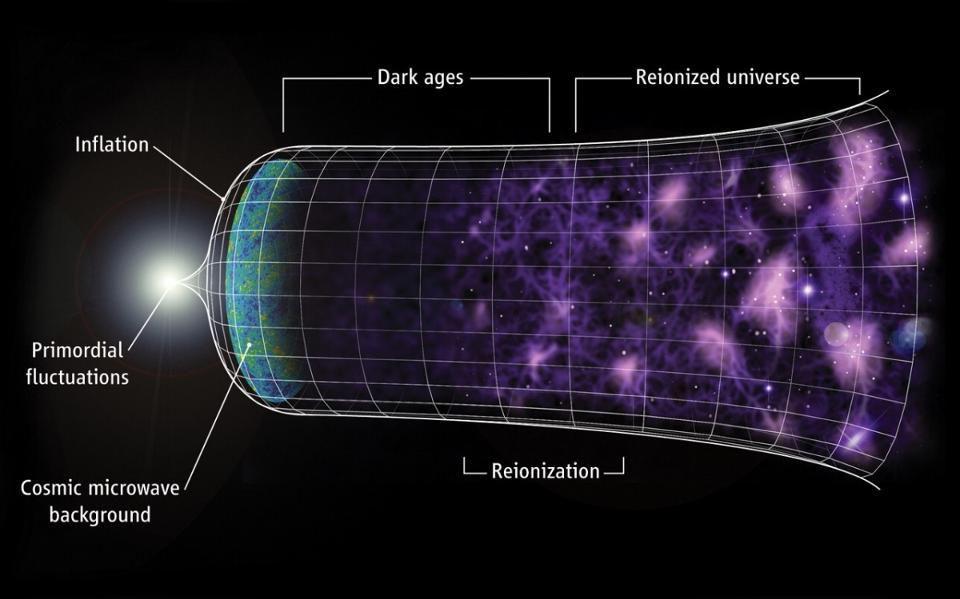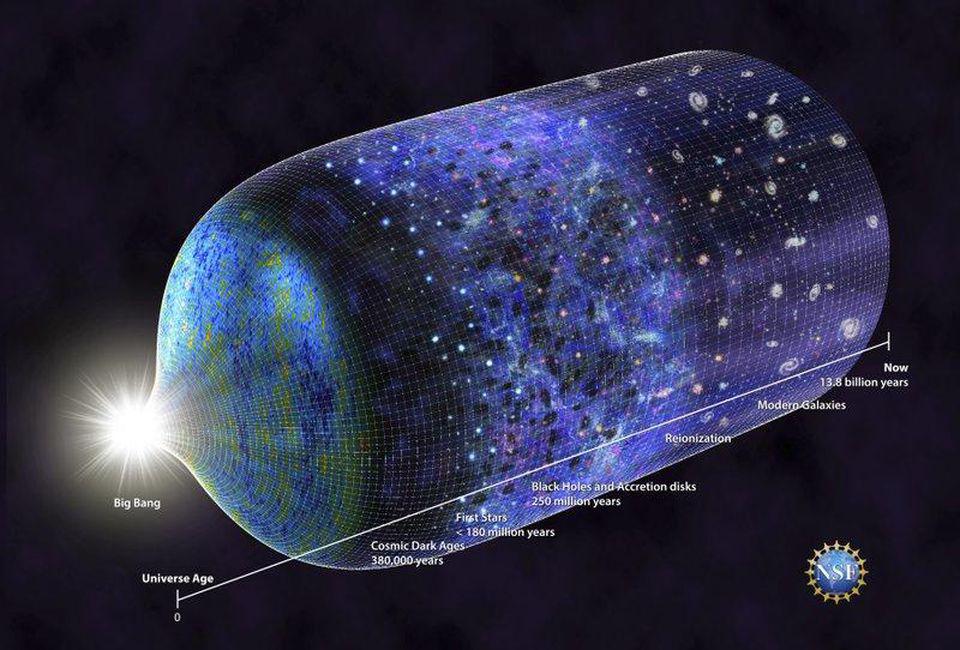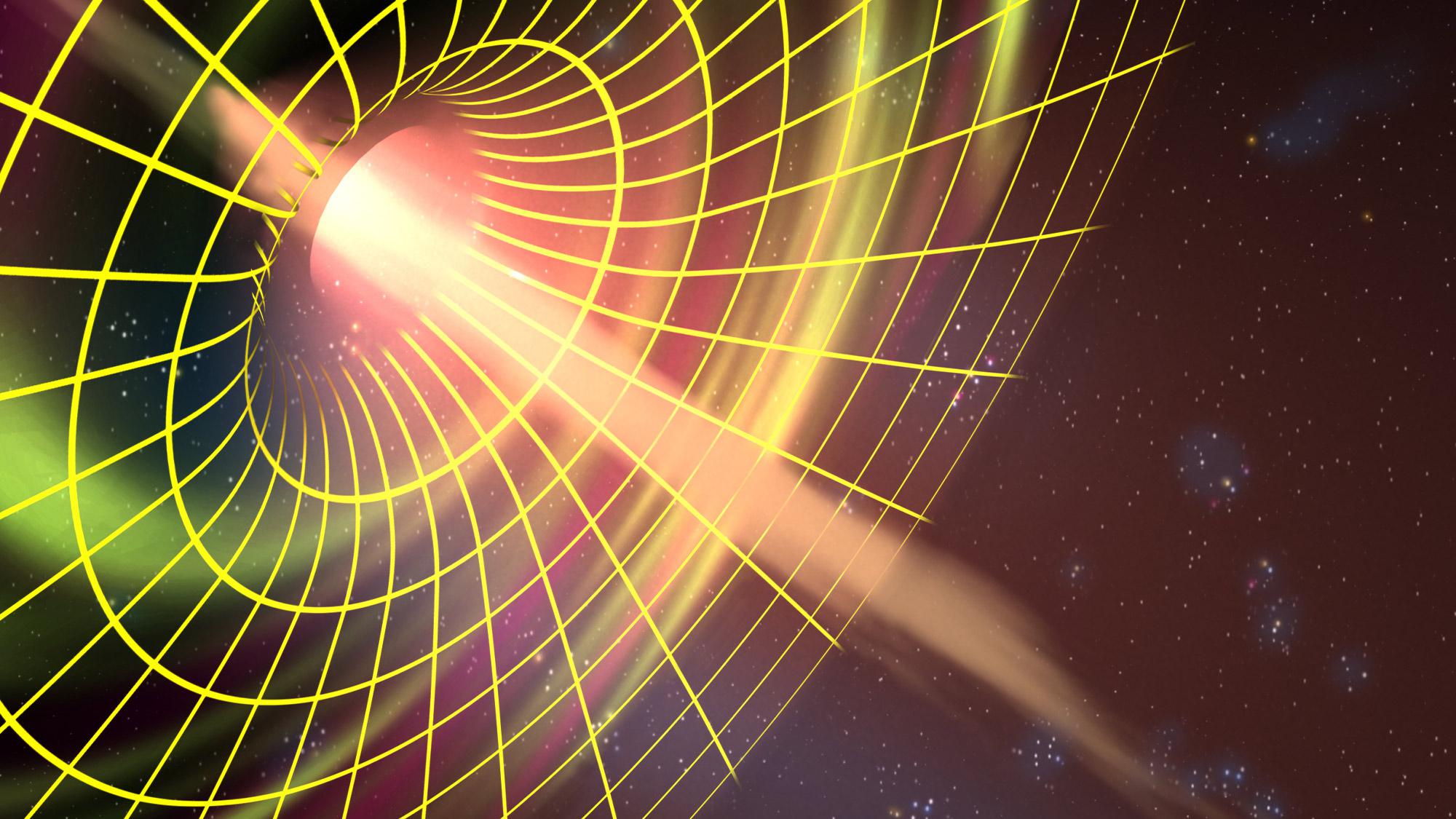Does modern cosmology prove the existence of God?
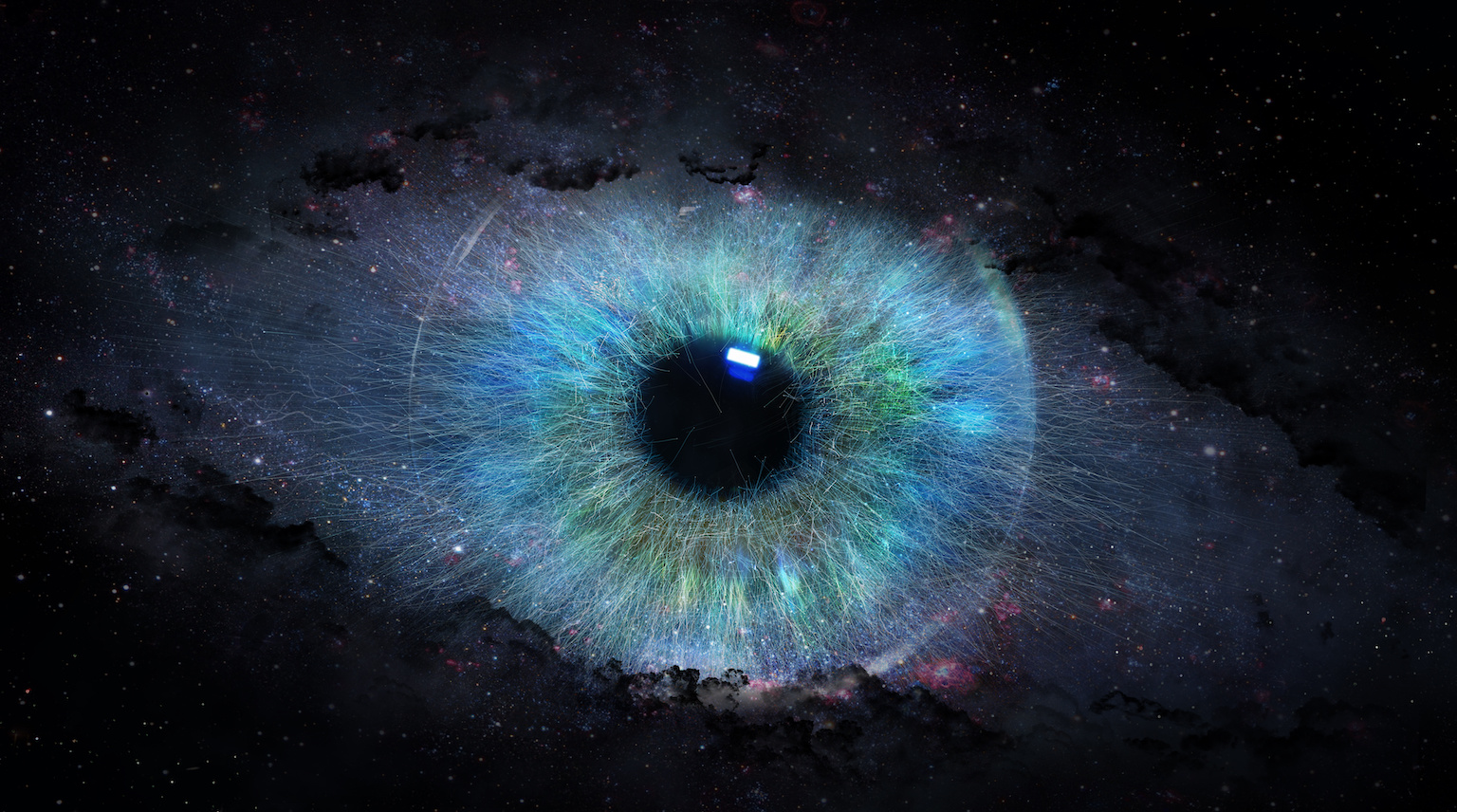
- The Kalam cosmological argument attempts to argue, based on logic and the Universe itself, that God must exist and must have created it.
- However, in order to be a compelling argument, there must not be any loopholes in any of the premises, assumptions, or steps in the argument.
- Based on what we currently know, a Universe arising from a creator is definitely possible but isn’t necessarily mandatory.
We know that everything in the Universe, as it exists today, arose from some pre-existing state that was different from how it is at present. Billions of years ago, there were no humans and no planet Earth, as our solar system, along with the ingredients necessary for life, first needed to form. The atoms and molecules essential to Earth also needed a cosmic origin: from the lives and deaths of stars, stellar corpses, and their constituent particles. The very stars themselves needed to form from the primeval atoms left over from the Big Bang. At every step, as we trace our cosmic history back farther and farther, we find that everything that exists or existed had a cause that brought about its existence.
Can we apply this logical structure to the Universe itself? Since the late 1970s, philosophers and religious scholars — along with a few scientists who also dabble in those arenas — have asserted that we can. Known as the Kalam cosmological argument, it asserts that
- whatever begins to exist has a cause,
- the Universe began to exist,
- and therefore the Universe has a cause to its existence.
So what, then, is the cause of the Universe’s existence? The answer must be God. That’s the crux of the argument that modern cosmology proves the existence of God. But how well do the premises hold up to scientific scrutiny? Has science proved them, or are other options possible or even likely? The answer lies neither in logic nor theological philosophy, but in our scientific knowledge of the Universe itself.

(Credit: Melissa Meister/ThorLabs)
Does everything that begins to exist, or comes into existence from a state of non-existence, have a cause?
If you think about it rationally, it makes intuitive sense that something cannot come from nothing. After all, the idea that anything can come from nothing sounds absurd; if it could, it would completely undercut the notion of cause and effect that we so thoroughly experience in our day-to-day lives. The idea of creation ex nihilo, or from nothing, violates our very ideas of common sense.
But our day-to-day experiences are not the sum total of all that there is to the Universe. There are plenty of physical, measurable phenomena that do appear to violate these notions of cause and effect, with the most famous examples occurring in the quantum Universe. As a simple example, we can look at a single radioactive atom. If you had a large number of these atoms, you could predict how much time would need to pass for half of them to decay: that’s the definition of a half-life. For any single atom, however, if you ask, “When will this atom decay?” or, “What will cause this atom to finally decay?” there is no cause-and-effect answer.

Credit: Dhatfield/Wikimedia Commons
There are ways you can force an atom to split apart: you can get the same effect with a cause. If you were to fire a particle at the atomic nucleus in question, for example, you could trigger its splitting apart and releasing energy. But radioactive decay forces us to reckon with this uncomfortable fact:
The same effect that we can achieve with an instigating cause can also be achieved, naturally, without any such instigating cause at all.
In other words, there is no cause for the phenomenon of when this atom will decay. It is as though the Universe has some sort of random, acausal nature to it that renders certain phenomena fundamentally indeterminate and unknowable. In fact, there are many other quantum phenomena that display this same type of randomness, including entangled spins, the rest masses of unstable particles, the position of a particle that’s passed through a double slit, and so on. In fact, there are many interpretations of quantum mechanics — paramount among them the Copenhagen Interpretation — where acausality is a central feature, not a bug, of nature.
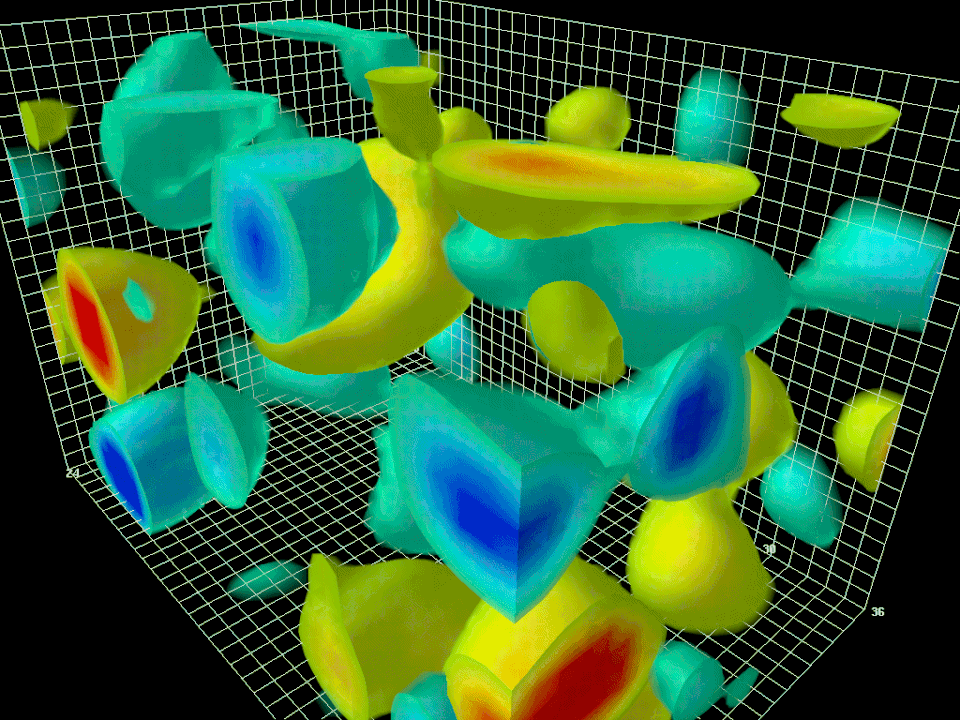
Credit: Derek Leinweber
You might argue, and some do, that the Copenhagen Interpretation isn’t the only way to make sense of the Universe and that there are other interpretations of quantum mechanics that are completely deterministic. While this is true, it’s also not a compelling argument; the viable interpretations of quantum mechanics are all observationally indistinguishable from one another, meaning they all have an equal claim to validity.
There are also many phenomena in the Universe that cannot be explained without ideas like:
- virtual particles,
- fluctuations of (unmeasurable) quantum fields,
- and a measurement device that forces an “interaction” to occur.
We see evidence of this in deep inelastic scattering experiments that probe the internal structure of protons; we predict that it needs to occur in order to explain black hole decay and Hawking radiation. To assert that “whatever begins to exist must have a cause” ignores the many, many examples from our quantum reality where — to put it generously — such a statement has not been robustly established. It may be possible that this is the case, but it is anything but certain.
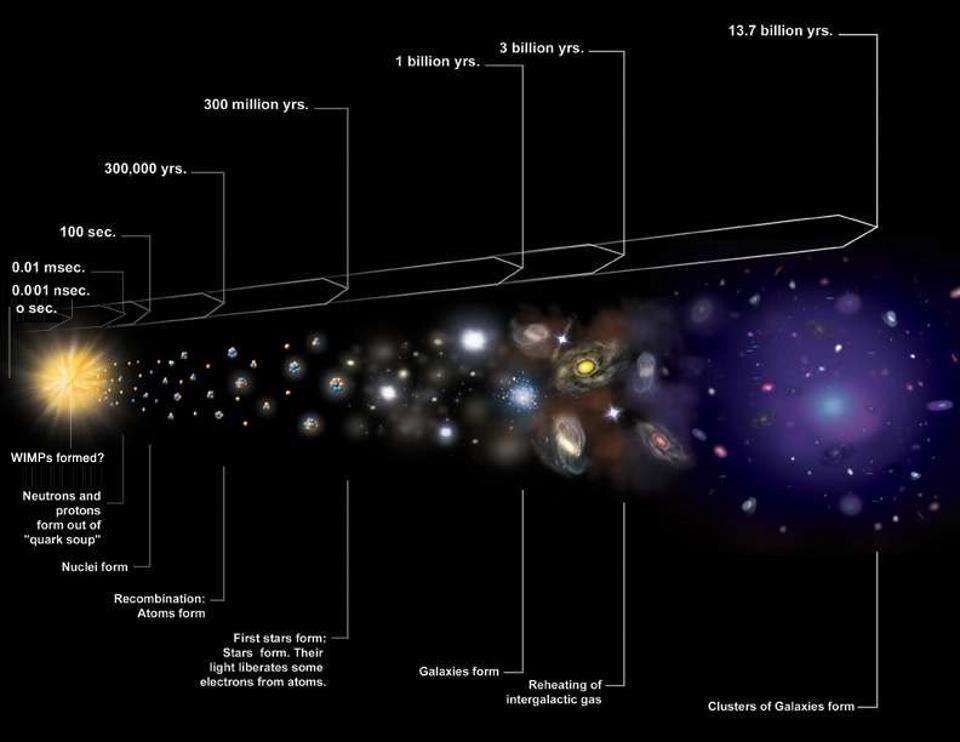
Did the Universe begin to exist?
This one is, believe it or not, even more dubious than the prior assertion. Whereas we can imagine that there is some fundamentally deterministic, non-random, cause-and-effect reality underlying what we observe as the bizarre and counterintuitive quantum world, it is very difficult to conclude that the Universe itself must have begun to exist at some point.
“But what about the Big Bang?”
That’s what they all say, right? Isn’t it true that our Universe began with a hot Big Bang some 13.8 billion years ago?
Kind of. Yes, it is definitely true that we can trace the history of our Universe back to an early, hot, dense, uniform, rapidly expanding state. It is true that we call that state the hot Big Bang. But what’s not true, and has been known to be not true for some 40+ years, is the notion that the Big Bang is the beginning of space, time, energy, the laws of physics, and everything that we know and experience. The Big Bang wasn’t the beginning but was rather preceded by a completely different state known as cosmic inflation.

Credit: E. Siegel/Beyond the Galaxy
There is an overwhelming set of evidence for this, which includes:
- the spectrum of density imperfections that the Universe exhibited at the onset of the hot Big Bang,
- the existence of those overdense and underdense regions on super-horizon cosmic scales,
- the fact that the Universe exhibited completely adiabatic, and no isocurvature, fluctuations at the earliest times,
- and the fact that there is an upper limit to the temperatures achieved in the early Universe that is well below the scale where the laws of physics break down.
Cosmic inflation corresponds to a phase of the Universe where it was not filled with matter and radiation, but rather it had a large, positive energy inherent to the fabric of space itself. Instead of getting less dense as the Universe expands, an inflating Universe maintains a constant energy density for as long as inflation persists. That means instead of expanding and cooling and slowing in its expansion, which the Universe has been doing since the start of the hot Big Bang, the Universe was, prior to that, expanding exponentially: rapidly, relentlessly, and at an unchanging rate.

Credit: C.-A. Faucher-Giguere, A. Lidz, and L. Hernquist, Science, 2008
This represents a tremendous change to our picture of what the beginning of things looked like. Whereas a Universe filled with matter or radiation will lead back to a singularity, an inflating spacetime cannot. Not just “may not” but cannot lead to a singularity. Remember, fundamentally, what it means to be an exponential in mathematics: after a certain amount of time, whatever you have will double. Then, when that same amount of time passes again, it doubles again, and so on and so on, without bound.
That same logic can be applied to the past: that same amount of time ago, whatever we had was half of what we had now. Take another, equivalent timestep backward, and it is halved once again. But no matter how many times you halve and halve and halve whatever you had initially, it will never reach zero. That’s what inflation teaches us: our Universe, for as long as inflation went on, can only get smaller but can never reach a size of zero or a time that can be identified as the beginning.
In the context of General Relativity and theoretical physics, we say that this means the Universe is past-timelike incomplete.

Credit: E. Siegel
Unfortunately for us, in scientific terms, we can only measure and observe what the Universe gives us as measurable and observable quantities. For all the successes of cosmic inflation, it does something that we can only consider unfortunate: by its nature, it wipes out any information from the Universe that existed prior to inflation. Not only that, but it eliminates any such information that arose prior to the final tiny fraction-of-a-second just before the end of inflation, which preceded and set up the hot Big Bang. To assert that “the Universe began to exist” is completely unsupported, both observationally and theoretically.
It’s true that, about 20 years ago, there was a theorem published — the Borde-Guth-Vilenkin theorem — that demonstrated that a Universe that always expands cannot have done so infinitely to the past. (It’s another way of expressing past-timelike incompleteness.) However, there is nothing that demands that the inflating Universe be preceded by a phase that was also expanding. There are numerous loopholes in this theorem as well: if you reverse the arrow of time, the theorem fails; if you replace the law of gravity with a specific set of quantum gravitational phenomena, the theorem fails; if you construct an eternally inflating steady-state Universe, the theorem fails.
Again, as before, a “Universe that came into existence from non-existence” is a possibility, but it is neither proven nor does it negate the other viable possibilities.

Credit: Nicole Rager Fuller/National Science Foundation
Therefore, the Universe has a cause, and that cause is God?
By now, we have certainly established that the first two premises of the Kalam cosmological argument are, at best, unproven. If we assume that they are, nevertheless, true, does that establish that God is the cause of our Universe’s existence? That is only defensible if you define God as “that which caused the Universe to come into existence from a state of non-existence.” Here are some examples that show why this is absurd.
- When we simulate a two-dimensional Universe on a computer, did we bring that Universe into existence, and are we, therefore, the God(s) of that Universe?
- If the Universe’s inflationary state arose from a pre-existing state, then is the state that gave rise to inflation the God of our Universe?
- And if there is a random quantum fluctuation that caused inflation to end and the hot Big Bang — the Universe as we know it — to begin, is that random process equivalent to God?
Although there would likely be some who argue in the affirmative, that hardly sounds like the all-powerful, omniscient, omnipotent being that we normally envision when we talk about God. If the first two premises are true, and they have not been established or proven to be true, then all we can say is that the Universe has a cause; not that that cause is God.

Credit: E. Siegel; ESA/Planck and the DOE/NASA/NSF Interagency Task Force on CMB research
The most important takeaway, however, is this: in any scientific endeavor, you absolutely cannot begin from the conclusion you hope to reach and work backward from there. That is antithetical to any knowledge-seeking enterprise to assume the answer ahead of time. You have to formulate your assertions in such a way that they can be scrutinized, tested, and either validated or falsified. In particular, you cannot posit an unprovable assertion and then claim you have “proved” the existence of something by deductive reasoning. If you cannot prove the premise, all logical reasoning predicated upon that premise is unsubstantiated.
It remains possible that the Universe does, at all levels, obey the intuitive rule of cause-and-effect, although the possibility of a fundamentally acausal, indeterminate, random Universe remains in play (and, arguably, preferred) as well. It is possible that the Universe did have a beginning to its existence, although that has by no means been established beyond any sort of reasonable scientific doubt. And if both of those things are true, then the Universe’s existence would have a cause, and that cause may be (but isn’t necessarily) something we can identify with God. However, possible does not equate to proof. Unless we can firmly establish many things that have yet to be demonstrated, the Kalam cosmological argument will only convince those who already agree with its unproven conclusions.

